D.W. Wilkin's Blog, page 15
November 13, 2016
A Jane Austen Sequel: Colonel Fitzwilliam’s Correspondence
Colonel Fitzwilliam’s Correspondence For your enjoyment, one of the Regency Romances I published.
It is available for sale and I hope that you will take the opportunity to order your copy.
For yourself or as a gift. It is now available in a variety of formats.
For just a few dollars this Regency Romance can be yours for your eReaders or physically in Trade Paperback.
Visit the dedicated Website
Barnes and Noble for your Nook or in Paperback
Amazon for your Kindle or in Trade Paperback
Witnessing his cousin marry for love and not money, as he felt destined to do, Colonel Fitzwilliam refused to himself to be jealous. He did not expect his acquaintance with the Bennet Clan to change that.
Catherine Bennet, often called Kitty, had not given a great deal of thought to how her life might change with her sisters Elizabeth and Jane becoming wed to rich and connected men. Certainly meeting Darcy’s handsome cousin, a Colonel, did not affect her.
But one had to admit that the connections of the Bingleys and Darcys were quite advantageous. All sorts of men desired introductions now that she had such wealthy new brothers.
Kitty knew that Lydia may have thought herself fortunate when she had married Wickham, the first Bennet daughter to wed. Kitty, though, knew that true fortune had come to her. She just wasn’t sure how best to apply herself.
Feedback
If you have any commentary, thoughts, ideas about the book (especially if you buy it, read it and like it
November 12, 2016
Regency Personalities Series-Sir Godfrey Webster 4th Baronet
Regency Personalities Series
In my attempts to provide us with the details of the Regency (I include those who were born before 1811 and who died after 1795), today I continue with one of the many period notables.
Sir Godfrey Webster 4th Baronet
25 December 1747 – 3 June 1800
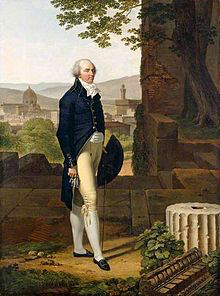
Sir Godfrey Webster 4th Baronet
Sir Godfrey Webster 4th Baronet was the son of Sir Godfrey Webster, 3rd Baronet and Elizabeth Cooper of Lockington, Derbyshire, and nephew of Sir Whistler Webster, 2nd Baronet.
In January 1780 Webster was on a Sussex committee set up to support the reformist Yorkshire Association. In 1783 he was fighting in a Sussex reform meeting for a general petition. In 1786 he entered parliament as MP for Seaford, with support from the Pelham interest, and after a petition. Standing there again in 1790 with John Tarleton, he was defeated, but Tarleton was elected after a petition. He was back in Parliament in 1796, for Wareham.
Webster’s uncle, the 2nd baronet, died in 1779, and about half a year later his father died in 1780, making him the 4th baronet. He inherited also Battle Abbey with its estate, but not with vacant possession since his aunt remained in residence.
Webster was elected a Fellow of the Royal Society in 1786. He committed suicide, shooting himself on 3 June 1800 after gambling losses.
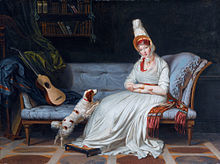
Lady Webster about 1795, by Louis Gauffier
Webster married in 1786 Elizabeth Vassall, daughter and heiress of Richard Vassall of Jamaica. It was a disastrous union which ended in divorce after Elizabeth’s repeated affairs with other men.
They had three children, not including two sons who died young:
Godfrey Vassall Webster, the 5th baronet;
Henry Vassall Webster;
Harriet Frances Webster, who married Fleetwood Pellew


November 11, 2016
Regency Personalities Series-The Asiatick Society
Regency Personalities Series
In my attempts to provide us with the details of the Regency (I include those who were born before 1811 and who died after 1795), today I continue with one of the many period notables.
The Asiatick Society
15 January 1784-
The Asiatick Society was founded by Sir William Jones on 15 January 1784 in a meeting presided over by Sir Robert Chambers, the Chief Justice of the Supreme Court at the Fort William in Calcutta, then capital of the British Raj, to enhance and further the cause of Oriental research. At the time of its foundation, this Society was named as “Asiatick Society”. In 1825, the society dropped the antique k without any formal resolution and the Society was renamed as “The Asiatic Society”. In 1832 the name was changed to “The Asiatic Society of Bengal.”
The Society is housed in a building at Park Street in Kolkata (Calcutta). The Society moved into this building during 1808. In 1823, the Medical and Physical Society of Calcutta was formed and all the meetings of this society were held in the Asiatic Society.
n January 1784 Sir William Jones sent out a circular-letter to a selected number of British residents of Calcutta with a view to establish a society for the Asiatic studies. At his inivitation, thirty British residents met in the Grand Jury Room of the Supreme Court (in Calcutta’s Fort William) on 15 January 1784. The meeting was presided over by Sir Robert Chambers. At this meeting, Jones explained the aims of the Society, he would establish. The Memorandum of Articles of the Asiatick Society, prepared by Jones said:
The bounds of investigations will be the geographical limits of Asia, and within these limits its enquiries will be extended to whatever is performed by man or produced by nature.
Notable early members were Charles Wilkins and Alexander Hamilton (the cousin of the American statesman). Initially, the Grand Jury Room of the Supreme Court was used for the meetings of the members, who had to pay a quarterly fee of two mohurs. The members were elected through ballot-voting. On 29 September 1796 the Society decided to have its own building. J.H. Harrington, then Vice-President selected the corner of Park Street and Chowringhee Road (present location) for the Society’s house. The site was granted to the society on 15 May 1805. The original plan for the new building was prepared by Captain Thomas Preston. The French architect, Jean Jacques Pichon (or Jean Jacques Pissaun) made certain modifications to it and constructed a two storeyed building at the site. This 15,071 ft² building was built at a cost of Rs. 30,000.00. The first quarterly meeting of the Society for 1808 was held at its new building on 3 February 1808.
From 1784 to 1828, only Europeans were elected members of the Society. In 1829, at the initiative of H.H. Wilson, a number of Indians were elected members, which include Dwarakanath Tagore, Sivchandra Das, Maharaja Baidyanath Roy, Maharaja Bunwari Govind Roy, Raja Kalikrishna Bahadur, Rajchunder Das, Ram Comul Sen and Prasanna Coomar Tagore. On 12 December 1832 Ram Comul Sen was elected ‘Native Secretary’.
The early collection of this library was enriched by the contributions it received from its members. On 25 March 1784 the library received seven Persian manuscripts from Henri Richardson. The next contribution came from William Marsden, who donated his book, History of Island of Sumatra (1783) on 10 November 1784. Robert Home, the first Library-in-Charge (1804) donated his small but valuable collection of works on art. The first accession of importance was a gift from the Seringapatam Committee on 3 February 1808 consisting of a collection from the Palace Library of Tipu Sultan. The library received the Surveyor-General Colonel Mackenzie’s collection of manuscripts and drawings in December 1822.
The museum of the Society was founded in 1814 under the superintendence of Nathaniel Wallich.
When the Indian Museum of Calcutta was established in 1814, the Society handed over most of its valuable collections to it. The Society however still has a museum of its own which possesses a rock edict of Asoka (c. 250 BCE) and a significant collection of copper plate inscriptions, coins, sculptures, manuscripts and archival records. Some masterpieces, like Joshua Reynolds’ Cupid asleep on Cloud , Guido Cagnacci’s Cleopatra, Thomas Daniell’s A Ghat at Benares and Peter Paul Rubens’ Infant Christ are also in the possession of this museum.
Asiatic Society of Bengal (1832). Asiatic researches or transactions of the Society instituted in Bengal, for inquiring into the history and antiquities, the arts, sciences, and literature, of Asia, Volume 17. Retrieved 24 April 2014.
Asiatick researches. 1832. Retrieved 24 April 2014.
Asiatick Researches, Or, Transactions of the Society Instituted in Bengal, for Inquiring Into the History and Antiquities, the Arts, Sciences, and Literature of Asia, Volume 17. Contributor Asiatick Society (Calcutta, India). Bengal Military Orphans Press. 1832. Retrieved 24 April 2014.


1st book in the Masqueraders Chocolate House series
I and five others have released the first in what could turn out to be a few, an anthology centered around Bath of the Georgian and Regency period. All proceeds go to charity, specifically the Great Ormond Street Hospital.
The Chocolate House
All For Love

Our Authors are noted and award winning storytellers in the genre of Georgian and Regency era Historical Novels:
David W Wilkin
Francine Howarth
Giselle Marks
Jessica Schira
Susan Ruth
Elizabeth Bailey
A Sensual blend of Chocolate, Romance, Murder & Mystery at “Masqueraders”.
The beautiful City of Bath, famous for its Roman Spa, its Abbey, its Pump Room & Assembly Rooms, and Sally Lunn’s bun shop, is a place made famous within the literary world by the likes of Jane Austen, Georgette Heyer, and other authors of Georgian and Regency historical novels. Thus Bath is renowned as a place for intrigue and romance, but few readers will have stepped across the threshold of Masqueraders’, a notorious and fashionable Chocolate House, that existed within the city from 1700 to the latter part of the reign of William IV. What happened to it thereafter, no one knows, for sure. Nor does anyone know why Sally Lunn’s bun shop disappeared for decades until it was rediscovered.
So it could be said, essence of chocolate drifting on the ether denotes where the seemingly mystical Masqueraders’ once existed, and it is that spiritual essence that has brought authors together from around the globe, to pen a delightful collection of Georgian & Regency romances, that are, all, in some way, linked to The Chocolate House. We sincerely hope you will enjoy the individual stories, and be assured all the royalties earned will be donated to Great Ormond Street Hospital for Children, London.
The stories:
A Rose by Any Other – Giselle Marks.
A Fatal Connection – Elizabeth Bailey
The Runaway Duchess – Francine Howarth
Death at the Chocolate House – Susan Ruth
A-Pig-in-a-Poke – Jessica Schira
A Little Chocolate in the Morning – David W. Wilkin.
My story (As the author and owner of this Blog, I feel I can tell you more) is the story of Charles Watkins the Marquis of Rockford (for those who want the nitty gritty, ask and we can discuss the very specific creation of name details that went into this) who has recently come into his title and estates, his father dying just about a year before. Now he is to return to London after his mourning is over to use his seat in the House of Lords in aid of the war against Napoleon. He is not in Town to seek a bride though the dowager Marchioness should like that he attain one.
No, certainly not the schoolmate of his younger sister Emma, Lady Caroline Williamson, the daughter of the Earl of Feversham. A girl as young and silly as his sister, he would never wed, and certainly not fall in love with. But rescuing her from the clutches of a man who was old enough to be his own grandfather, that he could do with ease, and perhaps Panache.
Available at Amazon Digitally for your Kindle for $2.99 or Physically in Trade Paperback


November 10, 2016
Regency Personalities Series-John Clerk Lord Eldin
Regency Personalities Series
In my attempts to provide us with the details of the Regency (I include those who were born before 1811 and who died after 1795), today I continue with one of the many period notables.
John Clerk Lord Eldin
1757–1832
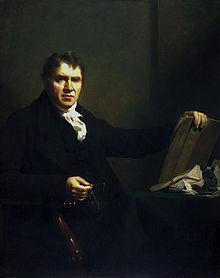
John Clerk
John Clerk Lord Eldin was the eldest son of John Clerk of Eldin, and his wife, Susannah Adam, the sister of John Adam and Robert Adam. He was born in April 1757 in Edinburgh.
Though originally intended for the Indian Civil Service, he was apprenticed to a writer to the signet. After serving his articles he practised for a year or two as an accountant, and eventually was admitted a member of the Faculty of Advocates on 3 December 1785.
He had an extensive practice at the bar. A keen Whig, on 11 March 1806 he was appointed Solicitor General for Scotland in the Grenville administration, an office which he held during the year that the ministry lasted. His practice at the bar had been for some time falling off, and his health had already begun to fail, when, on 10 November 1823, he was appointed an ordinary Lord of Session in place of William Bannatyne, Lord Bannatyne. Assuming the title of Lord Eldin, he took his seat on the bench 22 November; but his health was poor. After five years of judicial work he resigned in 1828, and was succeeded by John Fullerton, Lord Fullerton.
John’s father, his brother George and himself were friends of James Hutton.
He was elected a Fellow of the Royal Society of Edinburgh in 1784.
Clerk died unmarried at his house at 16 Picardy Place, Edinburgh, on 30 May 1832. He was buried with his ancestors in the Eldin vault in the Old Kirk of Lasswade, just south of Edinburgh.
His collection of pictures and prints was sold by auction at his house in March 1833; a serious accident occurred, the floor giving way.


An Unofficial Guide to how to win the Scenarios of Rollercoaster Tycoon 3 Soaked and Wild
An Unofficial Guide to how to win the Scenarios of Rollercoaster Tycoon 3, Soaked! and WILD!
I have been a fan of this series of computer games since early in its release of the very first game. That game was done by one programmer, Chris Sawyer, and it was the first I recall of an internet hit. Websites were put up in dedication to this game where people showed off their creations, based on real amusement parks. These sites were funded by individuals, an expense that was not necessarily as cheap then as it is now. Nor as easy to program then as it might be to build a web page now.
Prima Books released game guides for each iteration of the game, Rollercoaster Tycoon 1, Rollercoaster Tycoon 2 and Rollercoaster Tycoon 3 (RCT3) but not for the expansion sets. And unlike the first two works, the third guide was riddled with incorrect solutions. As I played the game that frustrated me. And I took to the forums that Atari, the game publisher hosted to see if I could find a way to solve those scenarios that the Prima Guide had written up in error. Not finding any good advice, I created my own for the scenarios that the “Official” Guide had gotten wrong.
Solutions that if you followed my advice you would win the scenario and move on. But if you followed the
“Official” version you would fail and not be able to complete the game. My style and format being different than the folks at Prima, I continued for all the Scenarios that they had gotten right as well, though my solutions cut to the chase and got you to the winner’s circle more quickly, more directly.
My contributions to the “Official” Forum, got me a place as a playtester for both expansions to the game, Soaked and Wild. And for each of these games, I wrote the guides during the play testing phase so all the play testers could solve the scenarios, and then once again after the official release to make changes in the formula in case our aiding to perfect the game had changed matters. For this, Atari and Frontier (the actual programmers of the game) placed me within the game itself.
And for the longest time, these have been free at the “Official” Forums, as well as my own website dedicated to the game. But a short time ago, I noticed that Atari, after one of its bankruptcies had deleted their forums. So now I am releasing the Guide for one and all. I have added new material and it is over 150 pages, for all three games. It is available for the Kindle at present for $7.99. It is also available as a trade paperback for just a little bit more.
You can also find this at Smashwords, iBooks, Kobo and Barnes and Noble
(Click on the picture to purchase)
Not only are all 39 Scenarios covered, but there are sections covering every Cheat Code, Custom Scenery, the famous Small Park Competition, the Advanced Fireworks Editor, the Flying Camera Route Editor which are all the techniques every amusement park designer needs to make a fantastic park in Rollercoaster Tycoon 3.
Scenarios for RCT 3
1) Vanilla Hills
2) Goldrush
3) Checkered Flag
4) Box Office
5) Fright Night
6) Go With The Flow
7) Broom Lake
8) Valley of Kings
9) Gunslinger
10) Ghost Town
11) National Treasure
12) New Blood
13) Island Hopping
14) Cosmic Crags
15) La La Land
16) Mountain Rescue
17) The Money Pit
18) Paradise Island
Scenarios for Soaked!
1) Captain Blackheart’s Cove
2) Oasis of Fun
3) Lost Atlantis
4) Monster Lake
5) Fountain of Youth
6) World of the Sea
7) Treasure Island
8) Mountain Spring
9) Castaway Getaway
Scenarios for WILD!
1) Scrub Gardens
2) Ostrich Farms Plains
3) Egyptian Sand Dance
4) A Rollercoaster Odyssey
5) Zoo Rescue
6) Mine Mountain
7) Insect World
8) Rocky Coasters
9) Lost Land of the Dinosaurs
10) Tiger Forest
11) Raiders of the Lost Coaster
12) Saxon Farms


November 9, 2016
Regency Personalities Series-Lieutenant-General Sir John Gaspard Le Marchant (Colonial administrator)
Regency Personalities Series
In my attempts to provide us with the details of the Regency (I include those who were born before 1811 and who died after 1795), today I continue with one of the many period notables.
Lieutenant-General Sir John Gaspard Le Marchant (Colonial administrator)
1803 – 6 February 1874
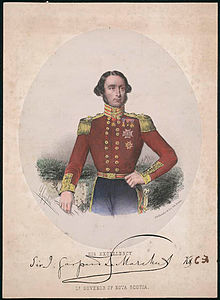
John Gaspard Le Marchant
Lieutenant-General Sir John Gaspard Le Marchant (Colonial administrator) was the son of Major-General John Le Marchant and the younger brother of Sir Denis Le Marchant, 1st Baronet, and was educated at High Wycombe Royal Grammar School and the Royal Military College, Sandhurst.
In 1820, at the age of seventeen, he was commissioned into the 10th Foot as an Ensign. In 1821 he transferred to the 57th Foot as a Lieutenant and later transferred to the 98th Foot, in which he was promoted Major. In 1835 he became adjutant-general of the British Auxiliary Legion in Spain with the rank of Brigadier-General. He transferred to the 20th Foot in 1837, the 99th Foot as Lieutenant-Colonel in 1839, the 85th Foot in 1845, and the 11th Foot as Colonel in 1862, holding the latter post until his death.
He was appointed as a Knight of the Order of Charles III by Isabella II, Queen of Spain in 1838, and was knighted and granted permission to use his Spanish knighthood in Britain. He was also a Knight Commander of the Military Order of St Ferdinand.
In 1847 he reluctantly accepted the governorship of Newfoundland. Le Marchant was opposed to the idea of responsible government and condemned local merchants of amassing wealth in the Colony and then returning to England. After the fire of 1846 funds were collected for the victims and Le Marchant, acting upon Robert Law’s recommendation that no further money be given to victims, then directed funds to the repair of public buildings and construction of roads in St. John’s and the outports.
He left Newfoundland in 1852, and then served a term as Lieutenant Governor of Nova Scotia. He became Governor of Malta in 1858 and Commander-in-Chief of the Madras Army in 1865 before he retired in 1868.
Le Marchant Road, a prominent street in St. John’s is named in his honour.


Space Opera Books presents ECO Agents:Save The Planet a Young Adult Adventure
First ECO Agents book available
Those who follow me for a long time know that I also write in other fields aside from Regency Romance and the historical novels I do.
A few months ago, before the end of last year and after 2011 NaNoWriMo, (where I wrote the first draft of another Regency) I started work on a project with my younger brother Douglas (All three of my brothers are younger brothers.)
The premise, as he is now an educator but once was a full on scientist at the NHI and FBI (Very cloak and dagger chemistry.) was that with the world having become green, and more green aware every week, why not have a group of prodigies, studying at a higher learning educational facility tackle the ills that have now begun to beset the world.
So it is now released. We are trickling it out to the major online channels and through Amazon it will be available in trade paperback. Available at Amazon for your Kindle, or your Kindle apps and other online bookstores. For $5.99 you can get this collaboration between the brothers Wilkin. Or get it for every teenager you know who has access to a Kindle or other eReader.
Barnes and Noble for your Nook Smashwords iBookstore for your Apple iDevices Amazon for your Kindle
Five young people are all that stands between a better world and corporate destruction. Parker, Priya, JCubed, Guillermo and Jennifer are not just your average high school students. They are ECOAgents, trusted the world over with protecting the planet.
Our Earth is in trouble. Humanity has damaged our home. Billionaire scientist turned educator, Dr. Daniel Phillips-Lee, is using his vast resources to reverse this situation. Zedadiah Carter, leader of the Earth’s most powerful company, is only getting richer, harvesting resources, with the aid of not so trustworthy employees.
When the company threatens part of the world’s water supply, covering up their involvement is business as usual. The Ecological Conservation Organization’s Academy of Higher Learning and Scientific Achievement, or simply the ECO Academy, high in the hills of Malibu, California overlooking the Pacific Ocean, is the envy of educational institutions worldwide.
The teenage students of the ECO Academy, among the best and brightest the planet has to offer, have decided they cannot just watch the world self-destruct. They will meet this challenge head on as they begin to heal the planet.
Feedback
If you have any commentary, thoughts, ideas about the book (especially if you buy it, read it and like it
November 8, 2016
Regency Personalities Series-James Loch
Regency Personalities Series
In my attempts to provide us with the details of the Regency (I include those who were born before 1811 and who died after 1795), today I continue with one of the many period notables.
James Loch
7 May 1780 – 28 June 1855
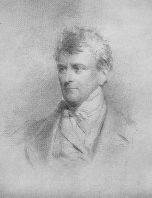
James Loch
James Loch was born near Edinburgh on 7 May 1780. He was eldest son of George Loch of Drylaw, Edinburgh. His mother, Mary, was daughter of John Adam of Blair, Kinross-shire, and sister of Lord-commissioner Adam. After his father’s death in 1788, he lived on the Blair Adam estate with his uncle.
In 1801 Loch was admitted an advocate in Scotland, and was called to the bar in England at Lincoln’s Inn on 15 November 1806, but abandoned the law after a few years of conveyancing practice.
He became interested in the management of estates, and was simultaneously auditor to the George, Marquis of Stafford (who married Elizabeth, Countess of Sutherland, and became shortly before he died Duke of Sutherland), to Lord Francis Egerton, afterwards Earl of Ellesmere, to the Bridgewater trustees, to the Earl of Carlisle, and to the trust estates of the Earl of Dudley and of George, Viscount Keith.
In this capacity he was responsible for much of the policy respecting the agricultural labourers and the improvement of agriculture pursued over tens of thousands of acres both in England and Scotland. The “Sutherlandshire clearances” of George, Marquis of Stafford, by which between 1811 and 1820 fifteen thousand crofters were removed from the inland to the seacoast districts, were carried out under his supervision.
For much of his life, Loch worked to effect the clearances and “to so mould and control the lives of ‘the ignorant and credulous people’ that at one time the young among them had to go to his agents for permission to marry”. According to Loch’s writings, “In a few years the character of the whole of this population will be completely changed… The children of those who are removed from the hills will lose all recollection of the habits and customs of their fathers”.
The manner in which the evictions were carried out could be exceedingly harsh, particularly in the valley of Strathnaver. An eye witness, Angus Mackay, commented that “It would be a very hard heart but would mourn to see the circumstances of the people… you would have pitied them, tumbling on the ground and greeting, tearing the ground with their hands…”.
In June 1827 Loch entered parliament as member for St Germans in Cornwall for the Whigs, and having held that seat until 1830, he was then returned without opposition for the Wick Burghs, and was regularly re-elected until 1852, when he was defeated, by 119 votes to 80, by Samuel Laing.
Loch published a pamphlet on the improvements on the Sutherland estates in 1820, and in 1834 printed privately a memoir of the first Duke of Sutherland. He was a fellow of the Geological, Statistical, and Zoological Societies, and a member of the committee of the Useful Knowledge Society. He died on 28 June 1855, at his house in Albemarle Street, London, and was buried in Brompton Cemetery.
Loch married, first, in 1810, Ann, youngest daughter of Patrick Orr of Bridgeton, Kincardineshire, by whom, among several other children, he had sons, Granville Gower Loch and Henry Brougham Loch, who was a G.C.M.G. and G.C.B., governor of the Cape, and high commissioner for South Africa.
Loch married, secondly, on 2 December 1847, Elizabeth Mary, widow of Major George Macartney Greville, 38th Foot, and eldest daughter of John Pearson of Tettenhall Wood, Staffordshire, who predeceased him on 29 December 1848.


Space Opera Books Presents A Trolling We Will Go Omnibus:The Latter Years
A Trolling We Will Go Omnibus:The Latter Years
Not only do I write Regency and Romance, but I also have delved into Fantasy.
The Trolling series, is the story of a man, Humphrey. We meet him as he has left youth and become a man with a man’s responsibilities. He is a woodcutter for a small village. It is a living, but it is not necessarily a great living. It does give him strength, muscles.
We follow him in a series of stories that encompass the stages of life. We see him when he starts his family, when he has older sons and the father son dynamic is tested.
We see him when his children begin to marry and have children, and at the end of his life when those he has loved, and those who were his friends proceed him over the threshold into death.
All this while he serves a kingdom troubled by monsters. Troubles that he and his friends will learn to deal with and rectify.
Here are the last two books together as one longer novel.
Trolling, Trolling, Trolling Fly Hides! and We’ll All Go a Trolling.
Available in a variety of formats.
For $5.99 you can get this fantasy adventure.

Barnes and Noble for your Nook
The stories of Humphrey and Gwendolyn. Published separately in: Trolling, Trolling, Trolling Fly Hides! and We’ll All Go a Trolling. These are the tales of how a simple Woodcutter who became a king and an overly educated girl who became his queen helped save the kingdom of Torahn from an ancient evil. Now with the aid of their children and their grandchildren.
Long forgotten is the way to fight the Trolls. Beasts that breed faster than rabbits it seems, and when they decide to migrate to the lands of humans, their seeming invulnerability spell doom for all in the kingdom of Torahn. Not only Torahn but all the human kingdoms that border the great mountains that divide the continent.
The Kingdom of Torahn has settled down to peace, but the many years of war to acheive that peace has seen to changes in the nearby Teantellen Mountains. Always when you think the Trolls have also sought peace, you are fooled for now, forced by Dragons at the highest peaks, the Trolls are marching again.
Now Humphrey is old, too old to lead and must pass these cares to his sons. Will they be as able as he always has been. He can advise, but he does not have the strength he used to have. Nor does Gwendolyn back in the Capital. Here are tales of how leaders we know and are familiar with must learn to trust the next generation to come.
Feedback
If you have any commentary, thoughts, ideas about the book (especially if you buy it, read it and like it






